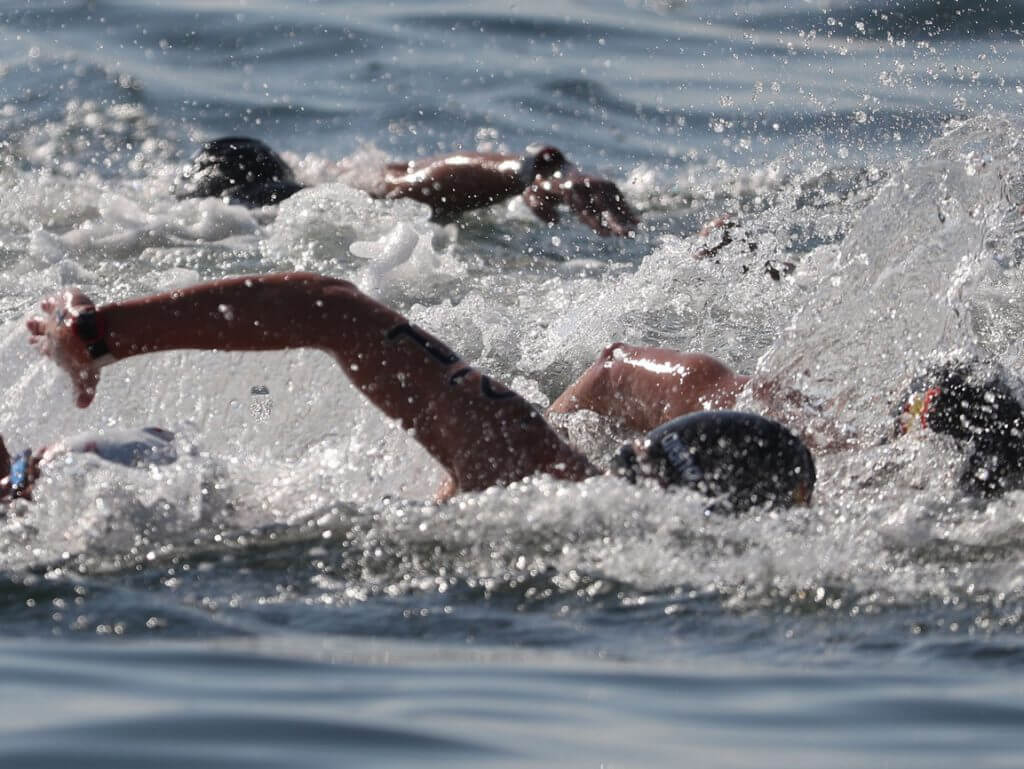USA Swimming Releases Open Water Guidelines

USA Swimming has released guidelines for open water swimming as swimmers start to use different training options with pools in many states still closed because of the COVID-19 pandemic.
Many swimmers are using open water as an alternative to get back in the water. That means some swimmers who are not used to what to look out for as far as open water is concerned, might need a refresher in what guidelines to follow, especially during the pandemic.
• Best Practices For Open Water
• Open Water Workouts
• Open Water Workout Examples
Here is a look at the safety concerns:
SAFETY MANAGEMENT FOR OPEN WATER WORKOUTS
USA Swimming Step 1: Know Your Venue
- ➢ Water Quality: Make sure that your venue has been checked for water quality and has been approved for “primary contact” or “bathing”. Frequency of tests and minimum standards vary by location and the local authority conducting the tests. CDC resources for water quality can be found here.
- ➢ Water Temperature: Conduct a water temperature test at 40cm of depth at your planned time for swimming. Many venues can have varying water temperature throughout the day, and you may need to adjust your workout times for optimal water temperature.
- ➢ Boat Traffic: Swim in areas without any motorized or unmotorized boat traffic.
- ➢ Conditions: Strong winds, low visibility, surf, etc. should all be analyzed prior to the
swim. WHEN IN DOUBT, DON’T SWIM!
- ➢ Marine Life: Find out if there is marine life that could be a safety issue.
- ➢ Entry & Exit Points: Find a place where athletes can safely enter and exit the water.
Avoid sharp rocks, shallow dives or slippery boat ramps. Many venues have a “beach” with a sandy bottom, which should be utilized whenever possible.
Step 2: Develop a Flexible Workout Plan
- ➢ Designate Your Swimming Boundaries: Athletes should always stay within the swimming boundaries to ensure that they are properly supervised.
- ➢ Develop a Course: Buoys or landmarks can be used to create a course. Circuit or “lap” style courses are effective ways of containing swimmers in the course boundaries while maximizing your “safety personnel”. Additionally, swimming in laps can prevent swimmers from swimming into one another and provides set distances for workout structure.
- ➢ Plan Breaks: Hydration and snack breaks on shore should be planned. Remember: athletes in the pool can rest between intervals, sets, etc. and this should be planned for during an open water workout.
USA Swimming has a minimum temperature is 60.8 degrees and maximum temperature is 85 degrees.
Wetsuits should be worn in temperatures below 65 degrees but can be worn in higher temperatures based on the athlete’s comfort level. Remember: athletes are acclimatized to an 80-degree pool so flexibility should be built into training duration and the use of wetsuits vs. swimsuits. Athletes may eventually acclimate to lower temperatures over time, but this process can take several weeks and can only be accomplished by incrementally increasing the time in the water.
➢ Be Flexible: Each athlete will respond to open water workouts differently. A 5K pool swim is much easier than a 5K open water swim. Do not get caught up with chasing specific distances initially.
USA Swimming Step 3: Have a Safety Plan
- ➢ Safety Personnel: The primary function of every staff member should be safety and supervision of athletes. A ratio of athlete to safety personnel is not as important as the response time to an athlete.
- ➢ Determine How Swimmers will be Supervised: Constant and adequate monitoring of swimmers is paramount during the swim. It is recommended to have safety personnel placed in zones throughout the course along with safety personnel following the swimmers while they swim. Safety personnel should not only pay attention to the swimmers but to boat traffic as well.
- ➢ Have Vessels Available for Safety Personnel: Stand up paddleboards, paddleboards, and kayaks are all effective vessels for monitoring swimmers. It is important to understand how to use your vessel and how to make a rescue if necessary. Supervising while onshore is not a replacement for in the water safety.
- ➢ Have Someone Onshore: Someone should always be positioned onshore with a cell phone in case of a 911 call.
- ➢ Develop a Communication Plan: Handheld radios in zip lock bags can be an effective way of communicating amongst safety personnel. Non-verbal communication is also critical in notifying the onshore staff member of a potential emergency.
- ➢ Develop an Emergency Action Plan: Open water environments are constantly changing so you should have a plan for immediate course evacuation. This should be communicated with all safety personnel and athletes and swimmers should be advised to swim directly to shore if there is a designated emergency signal.
- ➢ Hospital Location: Map out the location of the nearest hospital and communicate that with the safety personnel.
- ➢ First Aid: Have a fully stocked first aid kit. Minor bumps, bruises and scratches are common in open water swims.
- ➢ Get a Head Count: Count the swimmers as they enter and exit the water. Many swimmers will finish at different times, it is important to know how many swimmers are in the water at any given point.
Questions? Feel free to contact…
Kaitlin Pawlowicz (kpawlowicz@usawimming.org) Bryce Elser (belser@usaswimming.org)
Safety personnel should be able to reach a swimmer in no more than 20 seconds at any given point during the training session.




Guidelines for open water – social distance from sharks
Can you address open water swimming in regards to the COVID-19? Social Distancing? Safe water?